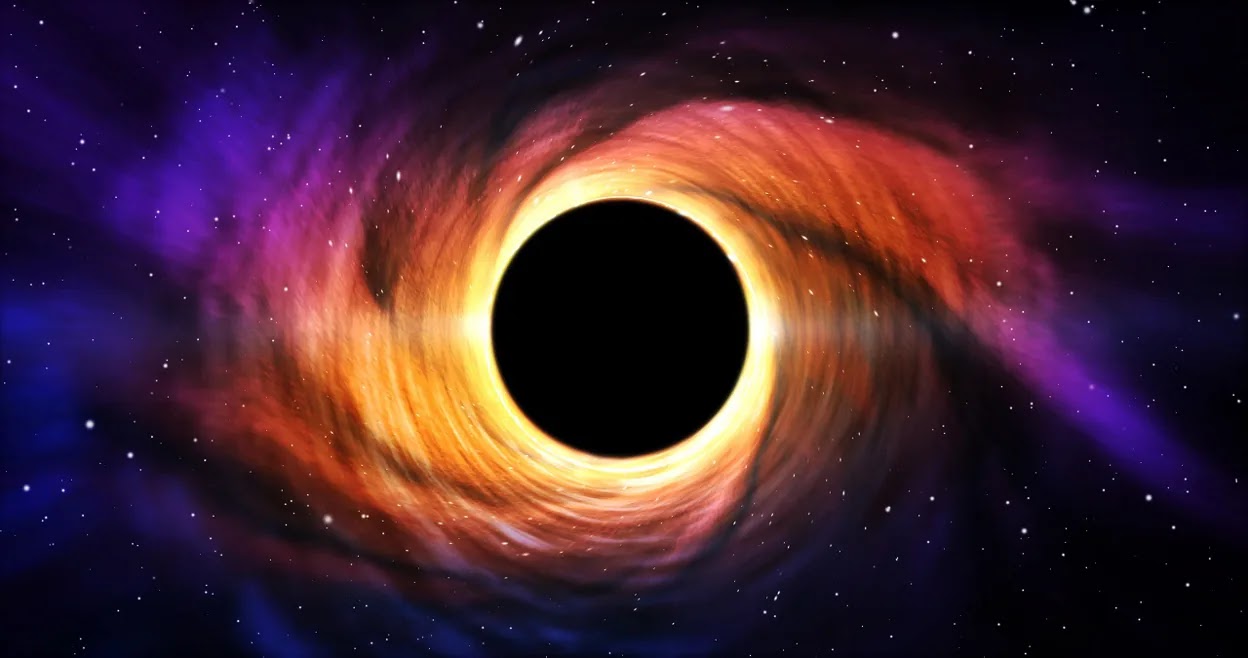In a groundbreaking discovery that has astounded the scientific community, researchers have identified the most ancient black hole ever detected. This celestial behemoth came into existence a mere 470 million years after the birth of the universe during the Big Bang.
The Collaborative Efforts of Webb and Chandra
- The discovery was made possible through the combined efforts of NASA’s James Webb Space Telescope and the Chandra X-Ray Observatory, which worked in tandem over the past year to unveil this cosmic marvel.
An Ancient Entity in an Expanding Universe
- Given that the universe is approximately 13.7 billion years old, the age of this black hole is estimated at 13.2 billion years.
- The newly discovered black hole is an absolute giant, measuring a staggering ten times larger than the black hole residing at the center of our own Milky Way galaxy.
A Weighty Enigma in the Cosmos
- This ancient black hole is believed to have a mass ranging from 10% to 100% of the combined mass of all the stars within its host galaxy.
- This mass ratio is incomparable to the minuscule proportions observed in black holes within our Milky Way and nearby galaxies, which typically account for a mere 0.1% of their respective galaxy’s mass.
The Birth of an Ancient Titan
- Scientists postulate that this prodigious black hole formed from the collapse of massive clouds of gas within a galaxy located adjacent to another galaxy containing stars.
- These two galaxies eventually merged, with the newly discovered black hole ultimately taking over the central position.
Illuminating the Distant Past: The Gravitational Lensing Technique
- The collaborative efforts of the Webb and Chandra space telescopes have unveiled an unprecedented view of the universe’s distant past.
- They employed a technique known as gravitational lensing to magnify the region of space housing the galaxy UHZ1 and its associated black hole.
- The telescopes harnessed the light emanating from a cluster of galaxies that is relatively closer to Earth, located a mere 3.2 billion light-years away. This amplification effect allowed them to observe UHZ1 and its colossal black hole, situated much farther in the cosmic background.
James Webb Space Telescope
- The James Webb Space Telescope, launched in 2021 and stationed at a point one million miles from Earth, stands as the most extensive and powerful astronomical observatory ever deployed in space.
- This cutting-edge instrument observes the universe in the infrared spectrum, enabling the exploration of celestial objects with unmatched precision.
- Webb’s primary mirror comprises 18 hexagonal mirror segments constructed from beryllium with a gold-plated finish. Collectively, these segments form a mirror with a substantial diameter of 6.5 meters (21 feet), a significant upgrade from Hubble’s 2.4 meters (7 feet 10 inches).
The Remarkable Chandra X-ray Observatory
- The Chandra X-ray Observatory (CXO), formerly the Advanced X-ray Astrophysics Facility (AXAF), is a flagship space telescope launched by NASA on July 23, 1999, aboard the Space Shuttle Columbia.
- It boasts extraordinary sensitivity, capable of detecting X-ray sources 100 times fainter than previous telescopes, thanks to its high-angular-resolution mirrors.
- This telescope is named in honor of the Nobel Prize-winning Indian-American astrophysicist, Subrahmanyan Chandrasekhar.




 ISRO Launches RESPOND Basket 2025, Calls...
ISRO Launches RESPOND Basket 2025, Calls...
 LVM3-M6 Rocket Set to Launch on December...
LVM3-M6 Rocket Set to Launch on December...
 Michaela Benthaus to Make History as Fir...
Michaela Benthaus to Make History as Fir...







